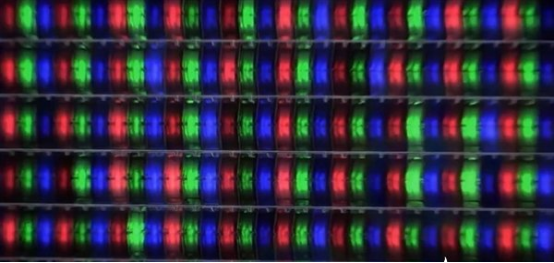What are the advantages of OLED?
Unlike LCD, it does not require a backlight module, so its body can be made very slim and long, and it also breaks through the angle limitation of the screen, so more and more mobile devices are now using OLED panels.
And in terms of color performance, viewing angle, refresh rate, response speed, etc., it also loses LCD, which is the future development direction of display devices.
ULED, QLED, SLED, GLED

ULED was launched by Hisense. Its feature is that it realizes partitioned light control, divides the backlight into multiple independent control units, and then precisely controls each unit according to the characteristics of the picture.
As of now, in addition to Hisense, other TV brand companies have launched TVs of this design.
ULED is based on the partitioned light control, plus a series of other image enhancement and optimization technologies. Not only can the screen brightness, color and other parameters be optimized, but also the backlight scanning technology, as well as the success of the picture tailing and jitter.
The addition of zoned light control technology allows the TV to achieve a good contrast between light and dark, so it performs well in HDR.
The full name of QLED is QD-LCD. On the basis of the backlight of the LCD TV, a layer of quantum dot film is added, and quantum dot technology is used to replace the yellow phosphor in the blue LED optical packaging material, so that the picture is displayed. The color reproduction, color gamut, and viewing angle have made significant progress, and we can get a glimpse of the price of the QD-LCD TV on the e-commerce platform.
As for the SLED joint between Konka and LG Display, which means Slim (slim) and Swinging (dazzling), it means that the screen can be ultra-thin while still providing colorful display effects.
The last GLED screen was developed by Skyworth, using WRGB (white, red, green, blue) 4 colors 4K + technology, plus Skyworth's own image processing engine, to optimize the picture effect and improve the picture quality.
The future shows the direction of development
In addition to these seemingly different ED brothers, QD-OLED and Micro-LED are truly future-oriented display technologies.
This QD-LED is also different from QLED, the same is that Samsung mainly promotes and uses QD quantum dot technology.
But the difference is that the former is just an improvement of the LCD panel that uses photoluminescence, and also requires a backlight layer, while the real quantum layer can be electroluminescent, similar to OLED panels, but only the light-emitting diodes in Quantum dot material.
As for Micro-LED, countless very tiny LED lights are integrated into semiconductor chips through semiconductor technology, so that each micrometer-level Micro-LED light acts as a pixel, and they can be flexibly controlled to light up.
Such a screen will have excellent performance in terms of power consumption, brightness, delay, and color purity. Obviously, it is a leap forward for the two mainstream display technologies.
After reading the above introduction to the common display technology terms on the market, the "variety" of screen names we see in shopping malls is largely just a means used by TV manufacturers for better marketing promotion Don't panic.
However, it should be understood that they are all innovated on the basis of the original LCD or OLED screen technology, and the resulting display effect is also very good.
However, when buying a TV, in addition to considering the screen imaging effect, there are various factors such as size, energy consumption label, price and so on.
If you want to know more, our website has product specifications for OLED, you can go to ALLICDATA ELECTRONICS LIMITED to get more information

